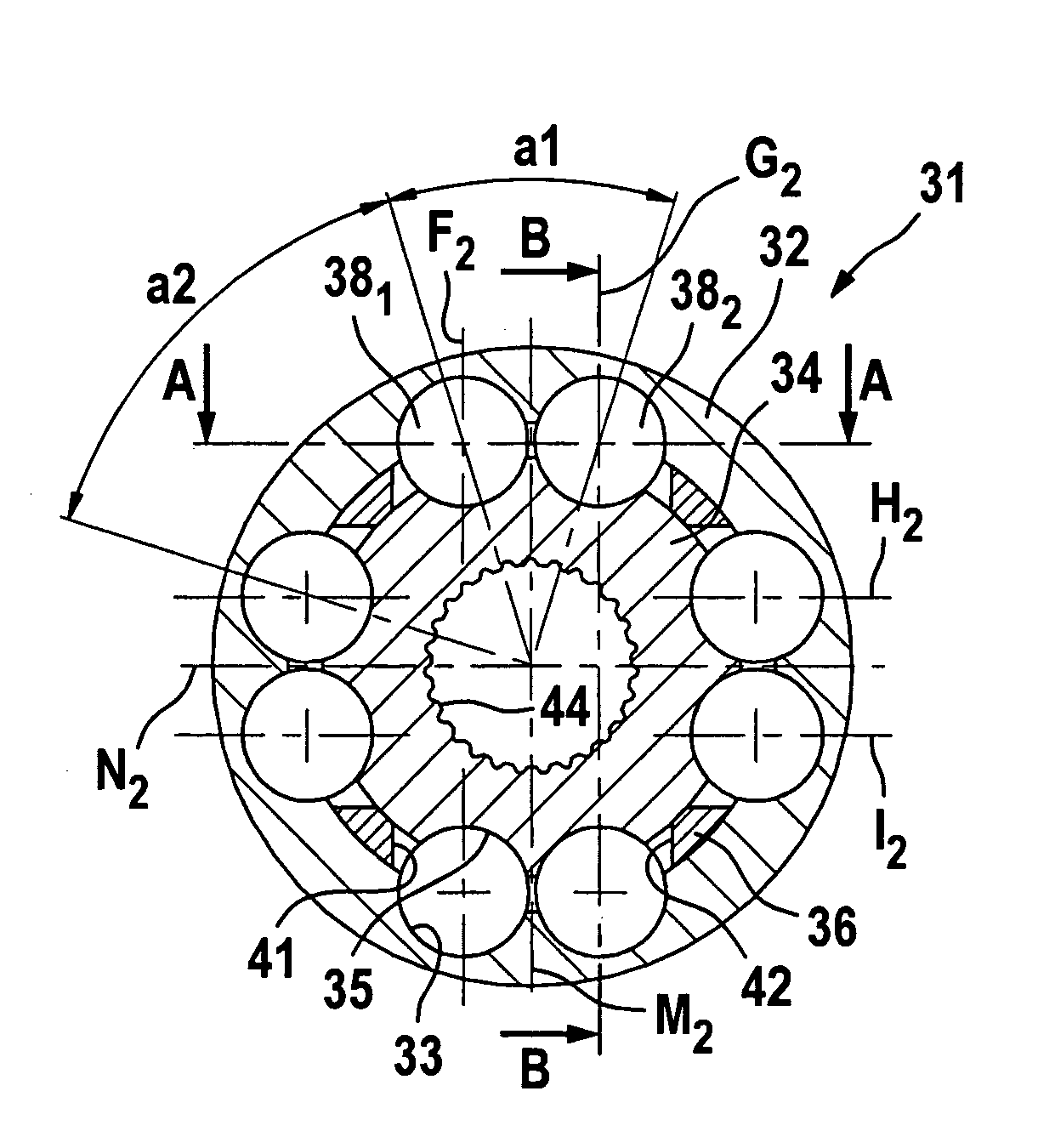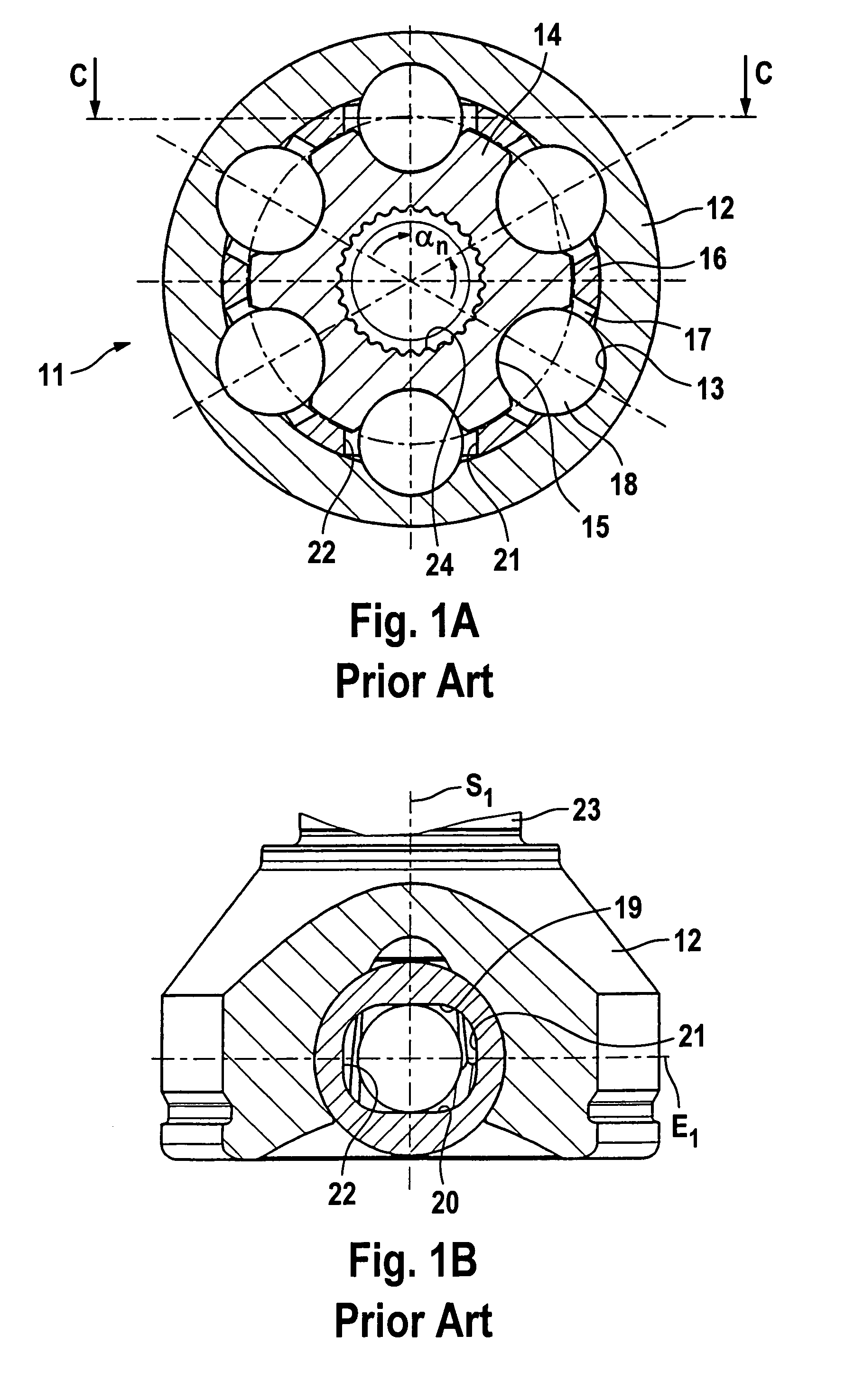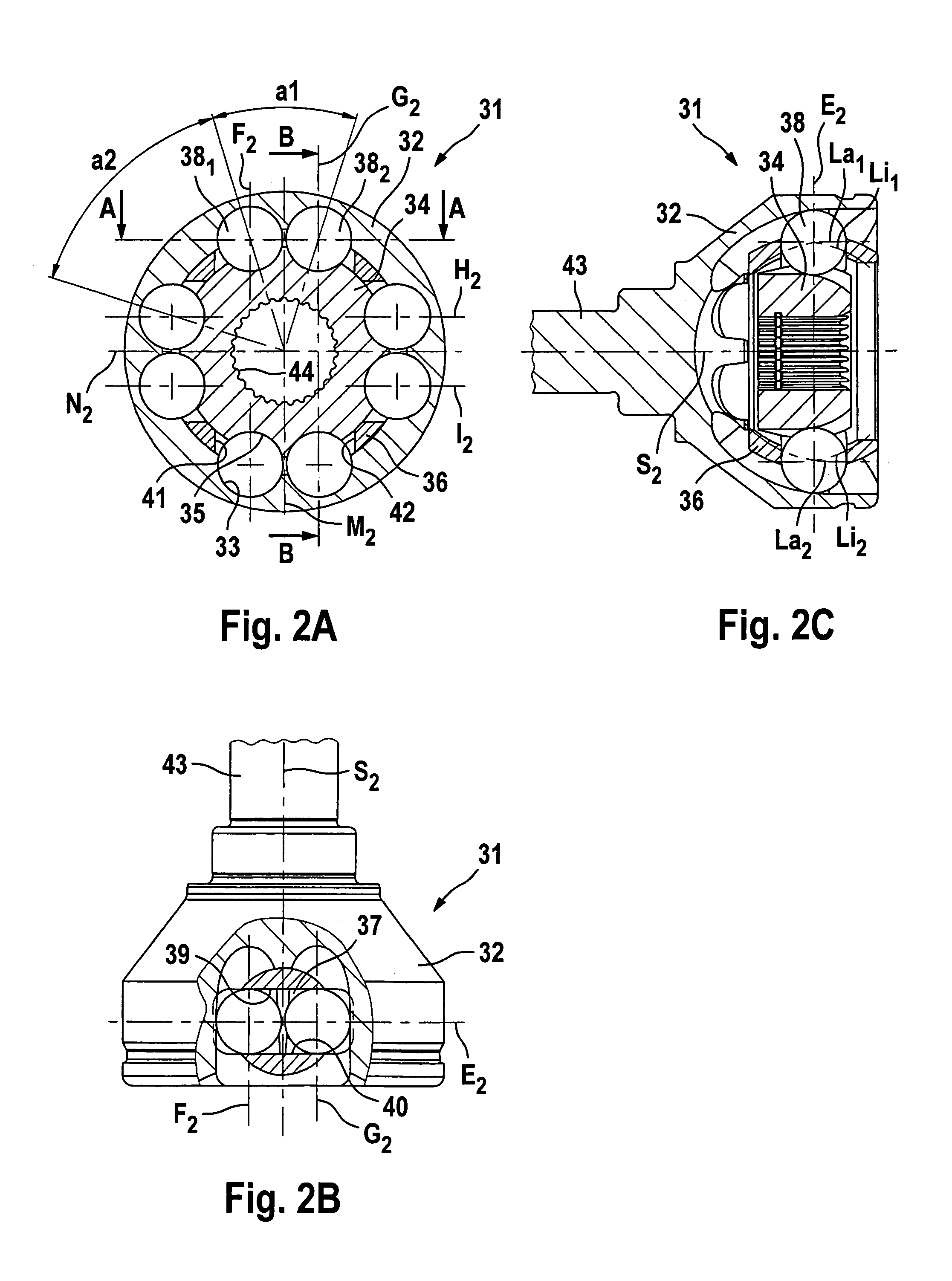Constant velocity ball joint with ball pairs whose tracks are located on symmetrical planes
a constant velocity, ball joint technology, applied in mechanical equipment, yielding couplings, rotary machine parts, etc., can solve the problems of reducing the width of the web between the cage windows and weakened cages, and achieve the greatest possible torque transmission capacity and high efficiency
- Summary
- Abstract
- Description
- Claims
- Application Information
AI Technical Summary
Benefits of technology
Problems solved by technology
Method used
Image
Examples
Embodiment Construction
[0044]FIG. 1 shows a constant velocity fixed joint 11 according to the state of the art in the form of a joint with six balls, comprising an outer joint part 12 with outer ball tracks 13, an inner joint part 14 with inner ball tracks 15, a ball cage 16 with cage windows 17 and balls 18 received in the latter. The cage windows comprise circumferentially extending parallel ball contact guiding flanks 19, 20 as well as ball contact end flanks 21, 22 connecting the latter. The respective pairs of flanks 19, 20; 21, 22 are arranged parallel relative to one another. Outer ball tracks 13 and inner ball tracks 15 which are associated with one another form sets of tracks in the sense as used in this Application. The angular distance between the individual pairs of tracks amounts to αn in all cases. The centers of the balls 18 are positioned in the central ball plane E1. The longitudinal axes have jointly been given the reference symbol S1.
[0045]At the outer joint part 12, there is formed on ...
PUM
 Login to View More
Login to View More Abstract
Description
Claims
Application Information
 Login to View More
Login to View More - R&D
- Intellectual Property
- Life Sciences
- Materials
- Tech Scout
- Unparalleled Data Quality
- Higher Quality Content
- 60% Fewer Hallucinations
Browse by: Latest US Patents, China's latest patents, Technical Efficacy Thesaurus, Application Domain, Technology Topic, Popular Technical Reports.
© 2025 PatSnap. All rights reserved.Legal|Privacy policy|Modern Slavery Act Transparency Statement|Sitemap|About US| Contact US: help@patsnap.com



